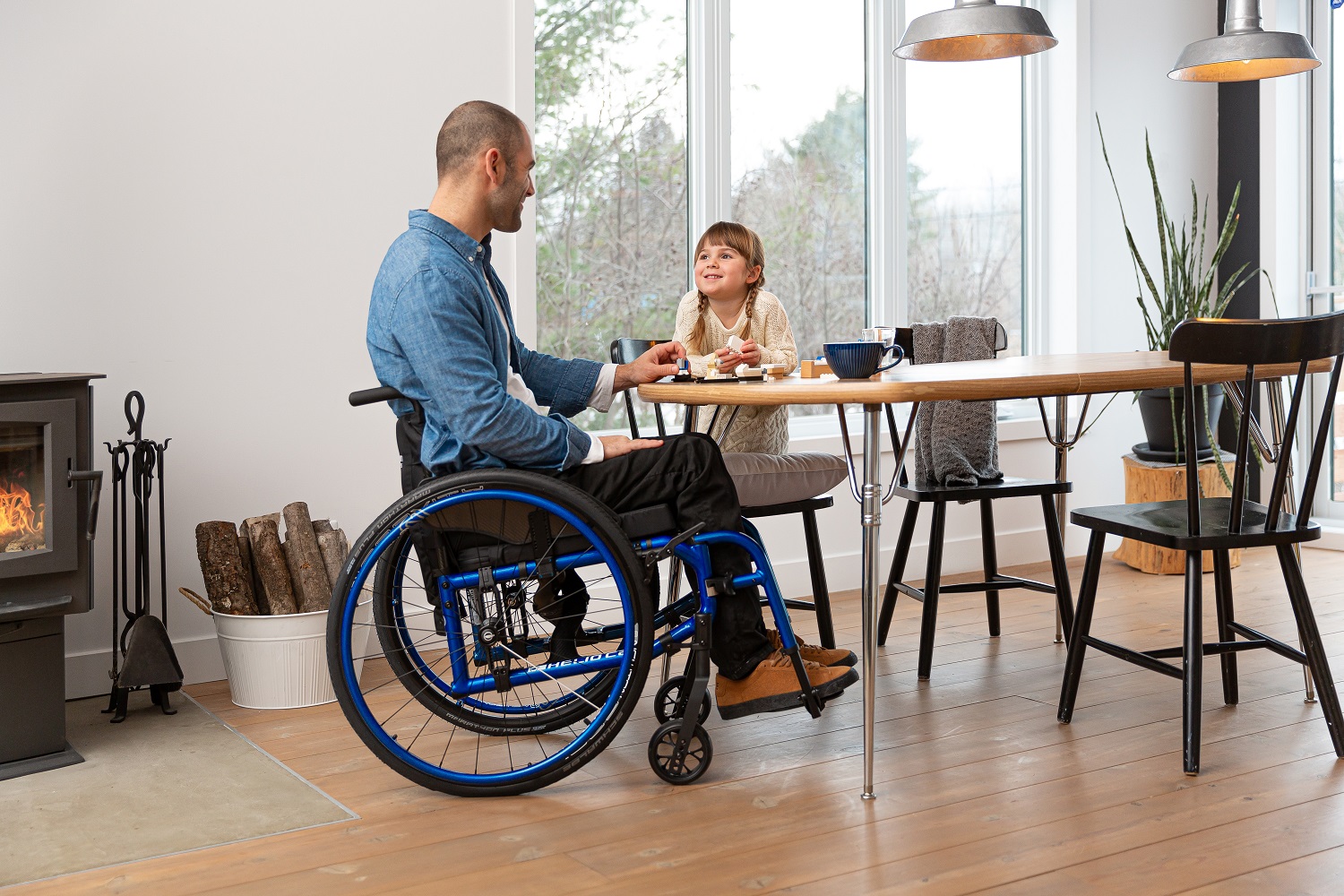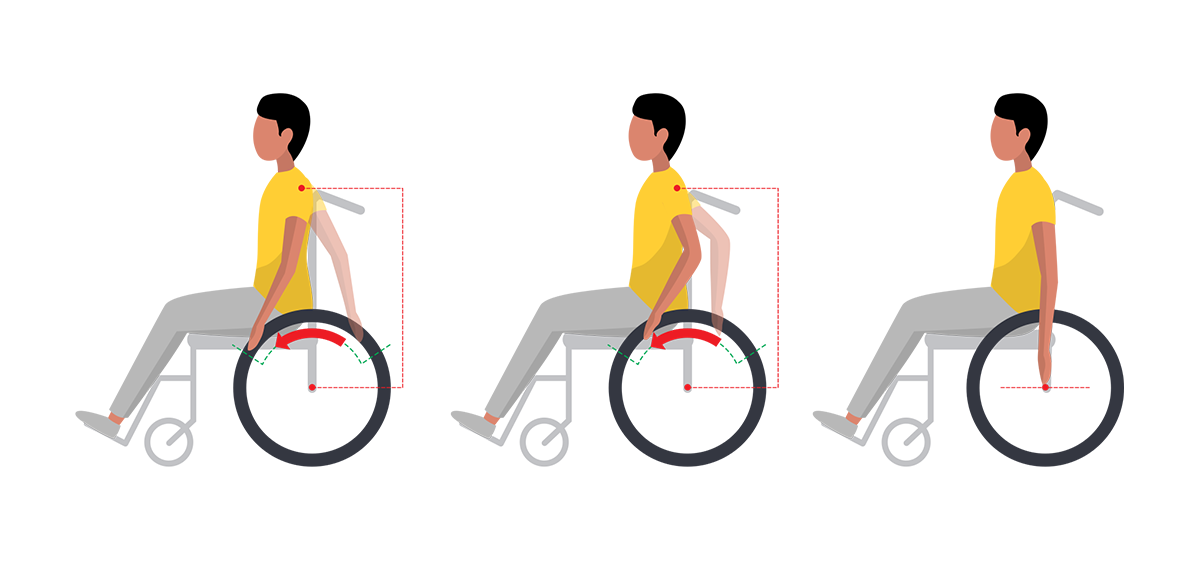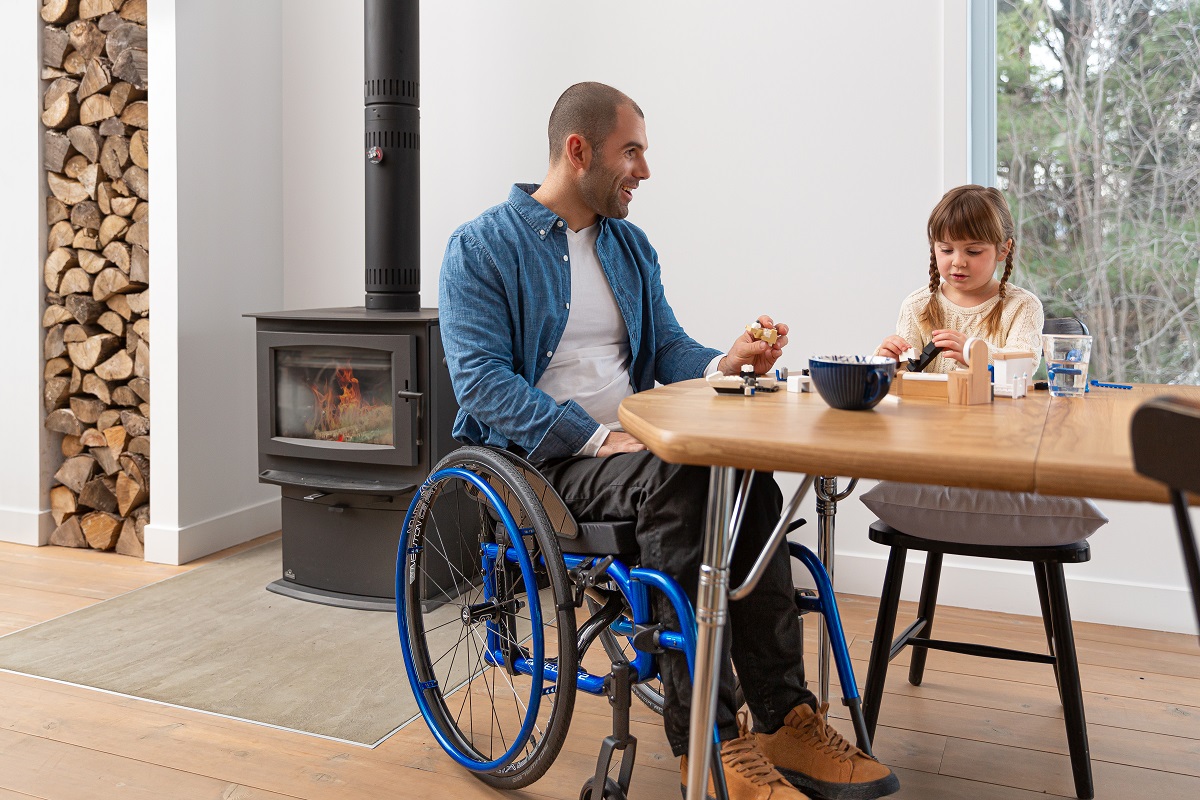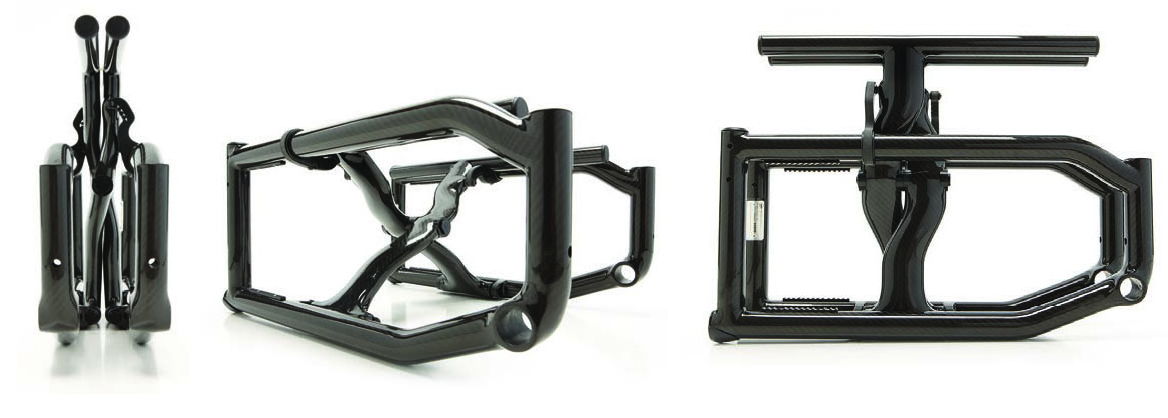Performance Wheelchairs

Considerations when setting up a manual wheelchair to meet lifestyle needs can differ significantly.
written by
Venesha Moodley
Astris PME Clinical Educator
(B.OT, Postgrad Cert in Clinical Rehab)
Common considerations will require a fine balance between propulsion efficiency and stability of the wheelchair.
Stability is desirable however increasing stability results in a reduction in propulsion efficiency of the wheelchair. Wheelchair stability is achieved by changing the horizontal position of the wheel axle. Moving the axle rearward, increases the wheelchair base length making the wheelchair base longer, requires the user to reach further back to grip the wheel for propulsion. A longer wheelbase means that increased turning space is required to manoeuvre a wheelchair and restrict use in tight spaces. Reaching further back to grip the wheel results in shorter push strokes and requires more frequent push strokes and increased strain on the upper limbs.

Propulsion efficiency is achieved by ensuring the wheelchair reduces the energy demands on the user during propulsion. This achieved by:
- Keeping the overall weight of the wheelchair and seating to a minimum to reduce upper limb injuries and for portability
- Shortening the distance between the rear wheel and the castor maintains a shorter wheelbase for ease of managing the wheelchair within confined spaces
- Keeping the load of the user closer to the wheel axle to reduce loading through the front castors. When the loading through the castors is reduced, wheelchair propulsion is easier.
- Managing the lower leg position by keeping the closed knee angle reduces the wheelbase and improves maneuverability of the wheelchair.
- Moving the axle vertically will impact on access to the push rim on the wheel. The optimal position of the upper limbs for wheelchair propulsion is the hand positioned on the top middle position of the push rim with the elbow angle of approximately 100-120 degrees. Such an elbow angle contributes to reduced risk of shoulder and wrist injury, generally results in a longer push stroke and hence the push stroke frequency is reduced.

 Other factors which impact on the overall performance of the wheelchair is the weight and unique features of the selected wheelchair and seating components.
Other factors which impact on the overall performance of the wheelchair is the weight and unique features of the selected wheelchair and seating components.
Astris PME has a carefully selected range of wheelchairs to ensure that key features such as STRENGTH, STABILITY and INGENIOUS DESIGN delivers the optimum lifestyle outcomes for the user. Whether this means variable terrain access, portability to reduce manual handling, greater safety for new users of wheelchairs or changing mobility needs over time.
The average wheelchair user performs multiple tasks each hour while seated in a wheelchair. This includes self-propulsion in varying environments, manual lifts for pressure relief and to manage transfers to and from surfaces.
The Helio C2 is a highly favoured carbon fibre folding wheelchair option for any age group and physical limitation with a range of accessories to suit active and moderately active users.


- One-piece unibody style frame – this means less moving parts, more rigidity and strength, reduced weight of the frame, less moving parts and hence reduced vibration through the wheelchair reducing consequent impact of fatigue and pain on the user, reducing overall maintenance of the wheelchair.

- The unique symmetrical cross brace which means that the frame is rigid when unfolded during use and maximises the overall stability of the wheelchair.
- The stability of the cross brace when the wheelchair is in use ensures that forces applied through the frame is evenly distributed reducing any torsion to the wheelchair frame, thus contributing to the durability of the frame.
- When considering a suitable stable, safe robust frame for use over even and uneven surfaces with or without the addition of power assist options, the carbon fibre Helio C2 provides the desired vibration dampening.
- The overall weight of a wheelchair is impacted by the choice of wheelchair accessories, including castor, wheel, castor housing options such as frog leg castor forks, footplate options. Seating options will also contribute to the overall weight of the mobility system.
- Wheel options can include standard spoke wheels, Newton Gravity Ultra-lightweight or Spinergy wheels.
- Carbon fibre offers high strength to weight ratio compared to other frame build options and while the carbon fibre option may be considered more expensive, its strength and durability mean less repairs in the long term while achieving the goal of a low frame weight.
- The folding frame combined with ultralight weight feature offers functional benefits related to portability, manual handling.
- Has an anti-flutter system for a smooth, more efficient ride.
- Explore the use of grade aid brakes for greater safety. When the grade aid device is in use it prevents the wheelchair from rolling backwards keeping the forward movement of the wheelchair. This device is simple to use and beneficial for elderly and cognitively impaired users due to the tactile differences between free wheel and grade aid positions (not suited for solid tyres).
- The configurability options permit the change in the set up of the wheelchair depending on changes in activity levels.
Contact Astris PME for the trial of your Helio C2. Call us on 1300 131 884

